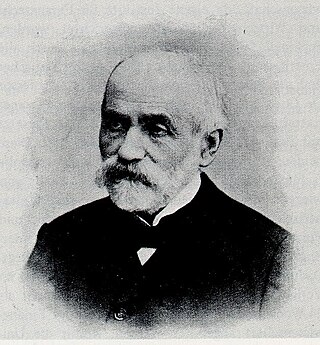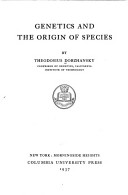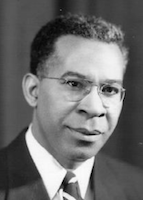
Ethnocentrism in social science and anthropology—as well as in colloquial English discourse—means to apply one's own culture or ethnicity as a frame of reference to judge other cultures, practices, behaviors, beliefs, and people, instead of using the standards of the particular culture involved. Since this judgment is often negative, some people also use the term to refer to the belief that one's culture is superior to, or more correct or normal than, all others—especially regarding the distinctions that define each ethnicity's cultural identity, such as language, behavior, customs, and religion. In common usage, it can also simply mean any culturally biased judgment. For example, ethnocentrism can be seen in the common portrayals of the Global South and the Global North.
Race is a categorization of humans based on shared physical or social qualities into groups generally viewed as distinct within a given society. The term came into common usage during the 16th century, when it was used to refer to groups of various kinds, including those characterized by close kinship relations. By the 17th century, the term began to refer to physical (phenotypical) traits, and then later to national affiliations. Modern science regards race as a social construct, an identity which is assigned based on rules made by society. While partly based on physical similarities within groups, race does not have an inherent physical or biological meaning. The concept of race is foundational to racism, the belief that humans can be divided based on the superiority of one race over another.

Theodosius Grigorievich Dobzhansky was an American geneticist and evolutionary biologist. He was a central figure in the field of evolutionary biology for his work in shaping the modern synthesis and also popular for his support and promotion of theistic evolution as a practicing Christian. Born in the Russian Empire, Dobzhansky immigrated to the United States in 1927, aged 27.
Racial discrimination is any discrimination against any individual on the basis of their race, ancestry, ethnic or national origin, and/or skin color and hair texture. Individuals can discriminate by refusing to do business with, socialize with, or share resources with people of a certain group. Governments can discriminate explicitly in law, for example through policies of racial segregation, disparate enforcement of laws, or disproportionate allocation of resources. Some jurisdictions have anti-discrimination laws which prohibit the government or individuals from being discriminated based on race in various circumstances. Some institutions and laws use affirmative action to attempt to overcome or compensate for the effects of racial discrimination. In some cases, this is simply enhanced recruitment of members of underrepresented groups; in other cases, there are firm racial quotas. Opponents of strong remedies like quotas characterize them as reverse discrimination, where members of a dominant or majority group are discriminated against.

Half-caste is a term used for individuals of multiracial descent. The word caste is borrowed from the Portuguese or Spanish word casta, meaning race. Terms such as half-caste, caste, quarter-caste and mix-breed were used by colonial officials in the British Empire during their classification of indigenous populations, and in Australia used during the Australian government's pursuit of a policy of assimilation. In Latin America, the equivalent term for half-castes was Cholo and Zambo. Some people now consider the term offensive.

The Prohibition of Mixed Marriages Act, Act No. 55 of 1949, was an apartheid-era law in South Africa that prohibited marriages between "whites" and "non-whites". It was among the first pieces of apartheid legislation to be passed following the National Party's rise to power in 1948. Subsequent legislation, especially the Population Registration and Immorality Acts of 1950, facilitated its implementation by requiring all individuals living in South Africa to register as a member of one of four officially defined racial groups and prohibiting extramarital sexual relationships between those classified as "white" on the one hand and those classified as "non-White" on the other. It did not criminalise sexual relationships between those classified as "non-Europeans".

"Nothing in Biology Makes Sense Except in the Light of Evolution" is a 1973 essay by the evolutionary biologist Theodosius Dobzhansky, criticising anti-evolution creationism and espousing theistic evolution. The essay was first published in American Biology Teacher in 1973.

Genetics and the Origin of Species is a 1937 book by the Ukrainian-American evolutionary biologist Theodosius Dobzhansky. It is regarded as one of the most important works of modern synthesis and was one of the earliest. The book popularized the work of population genetics to other biologists and influenced their appreciation for the genetic basis of evolution. In his book, Dobzhansky applied the theoretical work of Sewall Wright (1889–1988) to the study of natural populations, allowing him to address evolutionary problems in a novel way during his time. Dobzhansky implements theories of mutation, natural selection, and speciation throughout his book to explain the habits of populations and the resulting effects on their genetic behavior. The book explains evolution in depth as a process over time that accounts for the diversity of all life on Earth. The study of evolution was present, but greatly neglected at the time. Dobzhansky illustrates that evolution regarding the origin and nature of species during this time in history was deemed mysterious, but had expanding potential for progress to be made in its field.
Pierre L. van den Berghe was a Congolese-born American professor emeritus of sociology and anthropology at the University of Washington, where he had worked since 1965. Born in the Belgian Congo to Belgian parents, and spending World War II in occupied Belgium, he was an early witness to ethnic conflict and racism, which eventually led him to become a leading authority on ethnic relations. He conducted field work in South Africa, Mexico, Guatemala, Iran, Lebanon, Nigeria, Peru, and Israel. Early in his career, he lectured at the University of Natal alongside Leo Kuper and Fatima Meer. A student of Talcott Parsons at Harvard, he nevertheless had little interest in structural functionalism and was one of the first proponents of sociobiological approaches to social phenomena. Van den Berghe died on 6 February 2019.
Leo Kuper was a South African sociologist specialising in the study of genocide.

Joe Richard Feagin is an American sociologist and social theorist who has conducted extensive research on racial and gender issues in the United States. He is currently the Ella C. McFadden Distinguished Professor at Texas A&M University.
Microaggression is a term used for commonplace verbal, behavioral or environmental slights, whether intentional or unintentional, that communicate hostile, derogatory, or negative attitudes toward those of different races, cultures, beliefs, or genders. The term was coined by Harvard University psychiatrist Chester M. Pierce in 1970 to describe insults and dismissals which he regularly witnessed non-black Americans inflicting on African Americans. By the early 21st century, use of the term was applied to the casual disparagement of any socially marginalized group, including LGBT people, poor people, and disabled people. Psychologist Derald Wing Sue defines microaggressions as "brief, everyday exchanges that send denigrating messages to certain individuals because of their group membership". The persons making the comments may be otherwise well-intentioned and unaware of the potential impact of their words.
Identity tourism refers to the ways in which travel ties into different dimensions of identity. It covers travel motivated by interest in ones own or others' racial, ethnic, socioeconomic, sexual or gender identity. It also concerns the construction of cultural identities and re-examination of one's ethnic and cultural heritage via tourism.</ref>

Oliver Cromwell Cox was a Trinidadian-American sociologist. Cox was born into a middle-class family in Port of Spain, Trinidad and emigrated to the United States in 1919.
Eugenics manifesto was the name given to an article supporting eugenics, published in 1939 in the journal Nature, entitled Social Biology and Population Improvement.
John Milton Yinger was an American sociologist who was president of the American Sociological Association 1976–1977. Yinger received his Ph.D. from the University of Wisconsin, Madison, in 1942, and was Emeritus Professor of Sociology at Oberlin College.

Race relations is a sociological concept that emerged in Chicago in connection with the work of sociologist Robert E. Park and the Chicago race riot of 1919. Race relations designates a paradigm or field in sociology and a legal concept in the United Kingdom. As a sociological field, race relations attempts to explain how racial groups relate to each other. These relations vary depending on historical, social, and cultural context. The term is used in a generic way to designate race related interactions, dynamics, and issues.
Leslie Clarence Dunn was a developmental geneticist at Columbia University. His early work with the mouse T-locus and established ideas of gene interaction, fertility factors, and allelic distribution. Later work with other model organisms continued to contribute to developmental genetics. Dunn was also an activist, helping fellow scientists seek asylum during World War II, and a critic of eugenics movements.

Herrenvolk democracy is a nominally democratic form of government in which only a specific ethnic group has voting rights and the right to run for office, while other groups are disenfranchised. Herrenvolk democracy is a subtype of ethnocracy, which refers to any form of government where one ethnic group dominates the state, with or without elections. Elections were/are generally free, but voting suffrage was restricted based on race, with governance that reflected the interests of the politically dominant racial group. The German term Herrenvolk, meaning "master race", was used in nineteenth century discourse that justified German colonialism with the supposed racial superiority of Europeans.
Jerome Edwin Hirsch was an American psychologist known for his pioneering work in behavior genetics, and for his advocacy for social justice. He has been described as "the pioneer who brought quantitative genetic analysis to the study of behavior."









